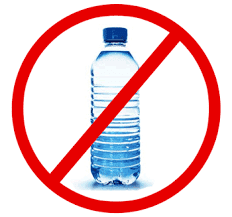With the growth of our team, we are ever mindful of the impact our activities have on the environment. In 2016, Natural Area are introducing monthly sustainability initiatives in order to reduce, reuse or recycle, increase awareness and contribute to sustainable work practices.
A large part of the Natural Area Sustainability Initiatives (NASI) relies on staff participation and interaction. Each month, we will focus on a sustainability issue and look at ways we can address the issue as a company and encourage staff to think about how they can address the issue as an individual in their own home.
Sustainability Initiative # 1 – Bottled Water
Why do we buy bottled water?
Bottled water is expensive. With 1 L of bottled water costing double the cost of 1 L of petrol.
Numerous studies show that bottled water is no cleaner than tap water. The Australian Drinking Water Guidelines cover management of tap water supply and are far more stringent than the Code that regulates bottled water.
Bottled water is increasingly popular in Australia.
Spring water is extracted from natural sources. Other bottled water is simply water from the municipal water supply that has been subjected to additional treatment.
Consumers may claim that bottled water is convenient and that it tastes better than tap water. It is also marketed as the healthy alternative to sugared drinks and as the most ‘pure’ available water.
But the health arguments for bottled water are overstated. There is no evidence that bottled water is more ‘pure’ than tap water, but plenty of evidence to suggest that bottled water is costly: both to the hip pocket and to the environment.
The Problem
- Spring water is extracted from underground aquifers upstream from where the water surfaces. This disrupts aquifer flow, affecting flora and fauna.
- Most bottled water is packaged in PET (polyethylene terephthalate) plastic bottles which are derived from crude oil. It can take up to 3L of water to produce 1L of water.
- Transportation of bottled water around the world requires burning of fossil fuels. Although plastic bottles are recyclable, many end up in landfill and take up.
to 1000 years to break down. When littered they often end up in the sea where they break up in small pieces, killing marine life that mistake them for. - On a health side, plastic bottles leach harmful PCB’s and BPA’s into the contents. PCBs (Polychlorinated Bipheynls) are a serious health problem because of their persistence in the environment, their accumulation in human and animal tissues, and their potential for chronic or delayed toxicity. The importation of PCBs for most purposes was banned in Australia in the 1970s. However water bottles are still allowed to have them.
What can we do?
1. Avoid bottled water. Australian tap water is world standard drinking water so it is the safe, cheap and sustainable option.
2. Install a tap filter if you are concerned about the taste or quality of your local tap water.
3. Buy a reusable bottle – there is a great range available from camping stores and other retailers.
4. Pick up and recycle any plastic bottles you find as rubbish.
5. Read about the world’s first town free from water bottles: Bundanoon in Australia.
What is Natural Area going to do?
1. Work towards being a ‘plastic free’ workplace and update the NAH Environmental Management Plan and Policy to reflect this.
2. Issue all staff with a stainless steel refillable water bottle for their use at Natural Area.
3. Provide good quality drinking water through filtered water dispensers located in wet areas or by filtration units installed on taps.
4. Encourage Natural Area staff to pick up plastic water bottles when they see them littered in the bush whilst undertaking normal work activities and dispose of appropriately.


